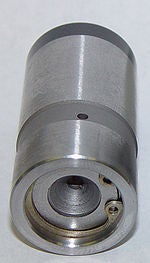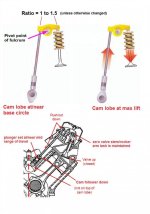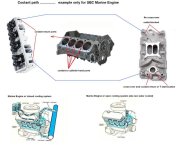Hello Every one. Am in the process of rebuilding an engine that got a blown gasket(s) due to engine overheating. Got the heads back from machining, installed new gaskets and heads, push rods etc. With the engine in no. 1 firing position I adjusted intake 1,2,5,7 and Exhaust 1,3,4,8. Rotated the crankshaft one turn and adjusted I-3,4,6,8 and E-2,5,6,7; I did everything according to the book, 1/2 turn more after lash was removed... once I was done adjusting all valves I finger tested the initial set of valves I adjusted and most of them where loose... Am I doing something wrong? should I re-adjust again and again? Please help me, I don't want to take a chance with this engine and mess it up... Thanks every one. P.S (this is my second project and is lots of fun working in this engines but am not a mechanic by trade)
Home
Outboard Motor Parts
Chrysler outboard parts Evinrude outboard parts Force outboard parts Honda outboard parts Johnson outboard parts Mariner outboard parts Mercury outboard parts Suzuki outboard parts Tohatsu outboard parts Yamaha outboard partsInboard & Sterndrive Engine Parts
Chrysler Marine inboard parts Crusader Marine parts MerCruiser sterndrive parts OMC sterndrive parts Pleasurecraft Marine parts Volvo Penta marine parts + MoreAll Engine Brands
All Manuals HomeOutboard Repair Manuals
Chrysler outboard manuals Evinrude outboard manuals Force outboard manuals Honda outboard manuals Johnson outboard manuals Mariner outboard manualsMercury outboard manuals Nissan outboard manuals Suzuki outboard manuals Tohatsu outboard manuals Yamaha outboard manuals
Inboard & Sterndrive Engine Manuals
MerCruiser sterndrive manuals OMC sterndrive manuals Volvo Penta marine engine manualsPlease Note
MarineEngine.com does not offer troubleshooting assistance or repair advice by email or by telephone.
You are invited to join our public Boat Repair Forum to seek assistance from other members.
You may also visit the Boat Motor Manuals section of our site to obtain a service manual.




